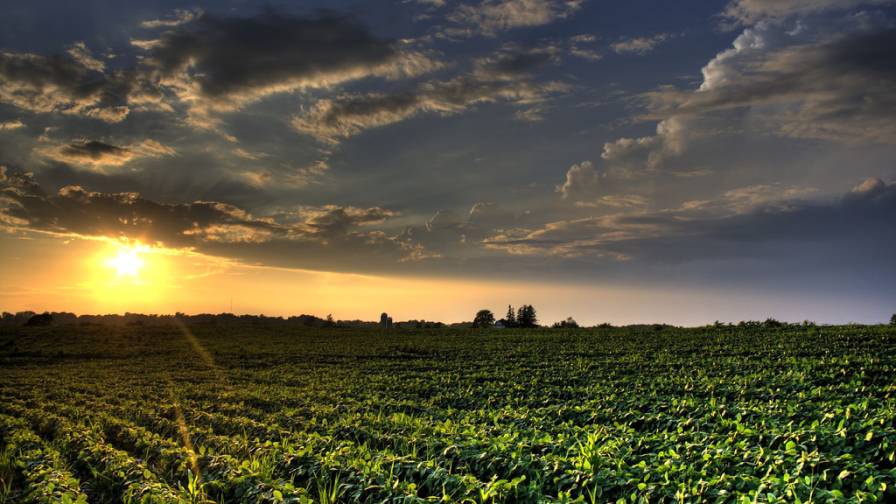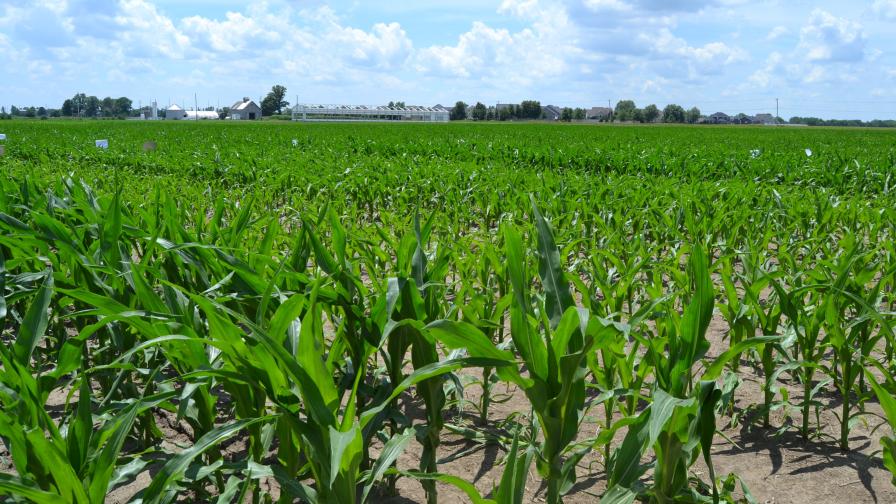5 Reasons Why Agriculture is in Worse Shape Than You Think

Despite his optimism about the long-term future of American agriculture, the glass has been “half empty” lately for market expert Dr. Jim Budzynski.
With all the things that can go wrong with nature and markets, in order to be a long-term “aggie” you have to have a fair amount of optimism and be a “glass-half-full” person. However, despite my optimism about the long-term future of U.S. agriculture, that glass is feeling “half empty” recently. My near-term pessimism is driven by a number of trends that seem likely to persist for several more years.
1. Deglobalization
Deglobalization is underway and the “Chimerica” marriage of convenience is headed for divorce. American corporations wanted to outsource manufacturing to drive higher profits. China wanted to develop their industrial infrastructure and still feed a huge population while millions moved from the countryside to work in factories in the city, which was facilitated by buying massive quantities of U.S. raw ag commodities. The marriage worked fine for a long time in meeting these objectives, but with a few unexpected side effects. The U.S. severely damaged its middle class by moving the highest paying blue-collar jobs abroad (enter populism), and China damaged their air, soil, and water quality through rapid (inadequately managed) industrialization.
Oops. So now American industry is rapidly moving supply chains out of China to find lower cost alternatives or using automation to cost-effectively produce products back in the U.S. (closer to the markets). China wants to clean up their environment while moving up the value chain (into formerly U.S.-dominated technology markets) with their new middle-class consumers. They also clearly wish to escape the stifling grip of the U.S. dollar. Our “Phase I trade deal” is the start of hammering out the divorce terms. Note: Deciding how to wind things down is not the same as getting back together. Even though we may not be able to afford to “move out” immediately, the romance is clearly gone. The “trade war” is by no means over – rather than the beginning of the end, it sure looks more like the end of the beginning.
2. Trade Politics
Although politics and trade policy have never comfortably co-existed, the two have become intertwined to a level not seen since the 1920s (remember “Smoot-Hawley tariffs” from grade school?). I get MAGA, but the combined impact of rewiring NAFTA/USMCA, ongoing trade wars with China, EU, etc., and our withdrawal from the Trans Pacific Partnership is that the U.S. is quickly losing its reputation as a reliable ag commodity trading partner. The result? Brazil, Australia, Canada, and others are gaining market share from the U.S. in agricultural commodities (soybeans, corn, cotton, wheat).
As an aside, have we forgotten we put Brazil in the soybean business with our 1972 export embargo to “contain domestic food inflation?” Our markets took 40 years to build, and they seem unlikely to “pop back” even if we decided we wanted to be a reliable trading partner again.
Political conflict with China is now inseparable from trade, and every flashpoint in the debates over forced technology appropriation, Hong Kong, Taiwan, the South China Sea, or Muslim “re-education” camps can set our ag trade relations backward overnight. Note: Opposition to China on these topics seems to be the only things Democrats and Republicans agree upon these days. It doesn’t feel like we are going back to “just selling stuff” to China any time soon.
3. Do the Math (Dead Pigs Don’t Eat)
The trade wars have not only impacted the volume of sales, but the price. For most of the past five years U.S. soybean prices have been $10-12/bushel. Today as I write this, beans are $8.71/bushel, a decline of ~15%-30%. Forgive me for the back-of-the-envelope numbers, but if China buys 100 mm tons of beans a year (3.3 billion bushels) and the U.S. has 60% share, our $21.7 billion in 2017 soybean sales was at a price of about $10.85/bushel.
If we assume about 70% of beans go into livestock feed (mostly pork), and the estimated 50%-60% swine herd death due to Asian swine flu are accurate, Chinese soybean demand has dropped perhaps 1.2 billion bushels/year! If the U.S. maintains 60% share (highly doubtful) at today’s price of $8.71, U.S. sales will drop to $11.3 billion, a 52% drop vs. 2017.
How are we going to sell China the “$40-50 billion of ag products” I heard President Trump recently talk about? Does someone have a sharper pencil than me? I just can’t see how we get there. My gut says 2017 may go down as the historical “high water mark” in U.S. agricultural trade with China.
4. Debt, Funny Money, and Farm Operating Leverage
The globalization frenzy of the past 25 years was facilitated by a massive buildup in debt. In the 1960s to 1980s, global debt was about $40 trillion, roughly 100% of global GDP. Today, global debt is a whopping $250 trillion, or 320% of GDP. Most of this was heavily facilitated by central bank money printing and interest rate manipulation, led by the U.S. Federal Reserve. Now they are stuck.
In addition to debt, central banks have created a bubble in virtually every asset class with artificially low interest rates. Every attempt to normalize rates (see Q4 2018) results in a market meltdown and debt market spasms. Apparently, the strategy now is to just keep pumping up the bubble until it spectacularly explodes. This is the strategy we used so successfully in 2001 and 2008. Great … good plan.
In addition to dealing with the fixed costs of farming with lower export volumes, many other farm operating costs are also going up. Land prices are levitating above what farm economics justify. This is because acquisitive farmers are diluting their balance sheets, and non-farmers are searching for farmland investments that provide cash flow and risk mitigation in a “funny money” world. Fertilizer production cutbacks will put a floor under prices. Ag chem logistics and production costs are rising due to the reconfiguration of global supply chains. This has resulted in negative contribution margins for many growers. Maybe we can lose a little bit on every bushel and make it up on volume?
5. Climate Change
I do not know why weather patterns seem more volatile and extreme every year. Maybe it’s man made, maybe it’s not. But who cares? It’s still just as wet, dry, hot, or cold regardless of the cause. That variability means challenges planting, harvesting, or simply getting enough growing degree days to grow a crop (see 2019). Let’s quit wasting energy trying to assign blame and spend our energy trying to figure out how to increase the resilience of our systems to the variability that seems to be a reality for the foreseeable future. Genomics, biologics, equipment, and precision technology all have a role to play in breaking the code here.
U.S. Agriculture: Taking One For The Team
I am sorry to sound like a pessimistic glass-half-empty guy, but it sure feels like U.S. agriculture is the “tip of the spear” in a global repositioning of agriculture, economics, technology, climate, and politics. I agree with finally addressing many of the problems (intellectual property theft, human rights abuses, environmental protection) that we have studiously ignored for decades, but U.S. agriculture is going to take a big hit in this global rebalancing. Have we really thought this through?
A big government check has kept (some of) us almost whole in 2019 but given our polarized economics we can’t count on that largesse continuing nearly as long as our challenges last. “Taking one for the team” is fine, but what if that pounding goes on for five years and the safety net fizzles out in three? Remember that most ag subsidies (except food stamps) are overwhelmingly spent in red states, and the Chinese (and some Democrats) have pretty transparently indicated they want to pressure the Republicans by making life harder for farmers who support them. I’m sure nothing could go wrong here.
We must step back and accept that the world we all grew up is gone forever, and the one replacing it will have plenty of BIG challenges in the near term. That said, it will also create a lot of opportunities for people willing to truly get out of the box and realize that a new container altogether might be required to avoid that feeling that the glass is half full. Fasten your seat belts!
What do you think? Let me know your thoughts on the state of agriculture by leaving a comment in the box below or emailing me at [email protected].







